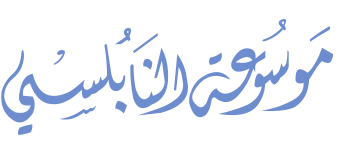Islamic topics- Articles in Danish Magazine (article 3)- Jewel of Median
- Miscellaneous Topics
- /
- Articles in Danish Magazine
In the Name of Allah, The Most Gracious, Most Merciful
While some might assume by the title, that this is an article about a magnificent, precious jewel that was recently discovered by a famous archaeologist, the title is actually a reference to a far more valuable jewel that exceeds the richness of the material world.
The jewel of Medina refers to lady Aisha, the youngest wife of Prophet Muhammad.
Many people, who are unfamiliar with the Prophet Muhammad’s life, are critical of his marital choices, suggesting they were inappropriate. Yet, when one appreciates the story of his life. It is clear all his choices stemmed from his devotion to humanitarian and missionary concerns,
Until the age of 25, Prophet Muhammad lived as single man in his home town of Mecca, However, he was not like the other single men in Mecca, he was distinguished through his chastity, decency, honesty and integrity, and as such he was viewed as a highly prized catch that many girls in Mecca longed to secure as a devoted husband.
At the age of 25 he began working for lady Khadijah a famous and noble businesswoman in Mecca. He attended to her trade activities in the northern region of the Arabian Peninsula, Lady Khadijah, who was 40 at the time, admired his honesty and perfect manners, and proposed to him despite their 15-year age difference. They married and lived happily as a couple in faithfulness and fidelity until the death of Lady Khadijah, 25 years later.
Following the death of Lady Khadijah, the Prophet entered into numerous marriages.
For missionary, political and tribal reasons. God ordered him to marry lady Zainab, son Zaid, as a method of illustrating the need to ban adoption, a widespread practice that created social problems prior to the introduction of Islam.
He also married a Jewish woman, Safiah, the daughter of the leader of a Jewish tribe. This marriage sought to unite the tribes and demonstrate that it is acceptable for Muslim men to marry Jews women.
A third marriage, to a Christian woman, Maria from Egypt, was undertaken to illustrate that it is acceptable for Muslim men and Christian women to unite in marriage.
A fourth marriage, to Lady Joaeriah, the daughter of a tribe leader who was held in captivity by Muslims following a battle, was undertaken to ensure the tribe’s prisoners, who became in-laws of the prophet following the marriage, could be released and increase the number of Islamic followers.
It’s important to understand that Islam didn’t introduce the practice of polygamy, through its teachings; rather, it sought to introduce the principle of limiting the maximum number of wives to four. Prior to Islam it was unlimited, not only in the Arabian Peninsula, but the world over. Consider the confer with Mutam before responding Mutam backed down when he realized his parents didn’t approve of the union, enabling Abu Bakr to happily accept the Prophet’s proposal. Hence Aisha and the Prophet Muhammad were betrothed. However, before marrying, the Prophet immigrated to Medina to establish an Islamic following there. He left Aisha with his relatives and friends in Mecca and a few years later, when things were settled in Median he called for them to immigrate to Medina as well.
Although some mistakenly claim Aisha was a child-bride of nine when she married the Prophet, she was 15 when arrived in Medina and married him.
Furthermore, it is important to consider the environment of the time when reflecting on historical events.
According to scientific theory, human intellectual and physical growth is heavily affected by the environment in which one lives and during the seventh century, when the average life-p was considerably less than it is today, a young girls at the age of nice living in a desert climate is compared physically to a 20-year old girl living in a modern city like Copenhagen in 2008.
Hostorically, there is no evidence of fault-finding by any of the Prophet’s enemies to Aisha’s betrothal to the Prophet at the age of nice, and such action was consistent with cultural norms and traditions of Meccca’s society at that time.
Aisha’s intelligence and love for learning enabled her to share 2.210 of the Prophet’s Hadiths after his death, a feat that has contributed significantly to the spreading of the teachings of Islam and preserving numerous minutes details of the Prophet’s words and daily actions.
Her contributions, gave millions access to the Islamic faith and are highly revered by followers of Islam.
From a Muslim’s perspective, her youth at the time of her marriage was a valuable blessing, as it enabled her to spend many years with the Prophet learning from him, and after his death, it ensured his recitations, revelations and wisdom lived on.
Aisha outlived the Prophet by many years, and there is a consensus among Muslim scholars that roughly one-quarter of Islam’s teachings, were transmitted through Aisha’s knowledge of the Prophet and his revelations.
Consequently, today’s Muslims highly value the contributions of Lady Aisha and aknowledge, with gratitude, her role in conveying the knowledge and teaching of Prophet.
To Modern-day Muslims, Lady Aisha’s contributions are considered one of the greatest achievements of women in history and as such, she is revered as The Jewel of Median.







